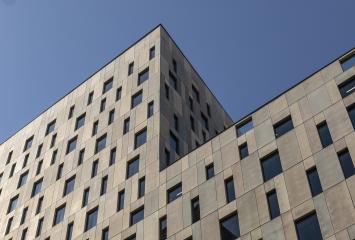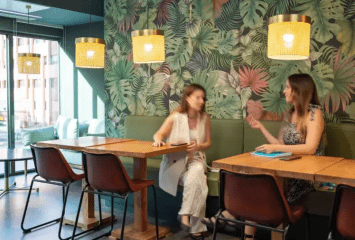Open spaces in the office
For several decades in the 20th century, the image of offices in the collective imagination was as follows: a set of tiny workrooms or a large room divided into an infinite number of tiny cubicles in which, in either case, workers operated in complete isolation. The idea of those designs was, supposedly, to maximize individual productivity for the optimization of the organization as a whole. Today the trend has changed. Today, companies increasingly prioritize open spaces in which all members of the company operate, spaces without barriers, meeting spaces. Let's take a look at the benefits.
First of all: it is human centric
The open space trend, born within the Anglo-Saxon office design tradition, is a human centric trend because its main intention is to enhance the work and human experience of workers. After all, people, as social animals, suffer to a lesser or greater extent in isolation, while they flourish emotionally in environments of bonding, participation and integration. This flourishing, in the form of greater satisfaction, a greater sense of belonging and reduced levels of stress, which is so damaging to the organism, also leads to the second of the benefits: greater individual productivity.
The inevitable: improved productivity
Twentieth century office designers, as well as companies, firmly believed that isolating workers in their rooms or compartmentalized cubicles boosted productivity by avoiding distractions. However, the reality seems to be quite different: individual performance increases when people feel happy in society and, in addition, and this is one of the most relevant and significant secrets of open space design, collective performance increases considerably. After all, having such open spaces allows workers to interact much more often and to enhance cooperation.
Special in its own right: teamwork empowerment
Teamwork, although it has a direct impact on productivity, and could remain as a note in the previous section, deserves its own section. After all, as experts indicate, cooperation offers many more benefits for organizations than competitiveness, which is why it is conquering business environments. There are synergies within the same departments and interdepartmental synergies, all of them sources of knowledge exchange and motivating the cultivation of collective creativity. People bring out the best in each other when they function as a group. And open spaces are key to this.
Flexibility: a source of organizational adaptability
Open spaces improve people's emotional state both by strengthening interpersonal connection and by the use and enjoyment of openness. It also improves communication and cooperation, resulting in greater efficiency and productivity. But there is one more value of this type of design for companies: they allow for partial or total restructuring of spaces that gives companies the ability to adapt to meet their current needs at any given time. This is in contrast to the rigid room partitions that have been the norm in most office buildings for most of their history.
Madnum and Illacuna: two examples of open space-based buildings
At Colonial, we have pursued a human-centric approach to office design from the outset and, whenever possible, we provide our assets with as many open and flexible spaces as possible. Madnum, located on Calle Méndez Álvaro in Madrid, and Illacuna, located on Carrer de la Llacuna in Barcelona, are two paradigmatic examples of this. And not only because of the open work spaces, but also because of the open rest spaces. Ultimately, the same logic that supports the idea of the former works for the latter and these open-air green areas foster happiness, communication and productivity. They are the present and the future of office design.

